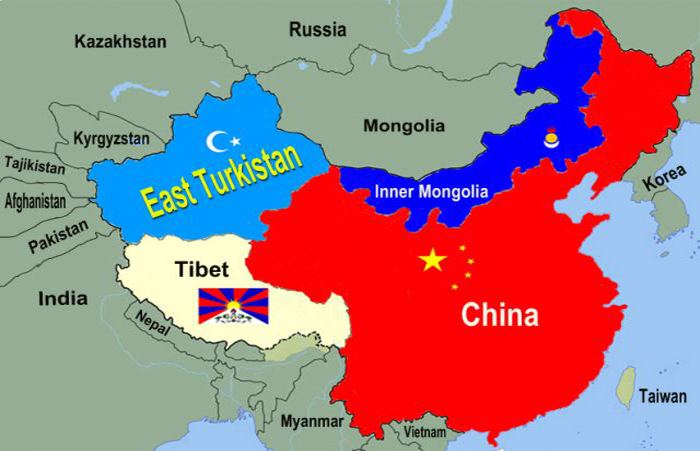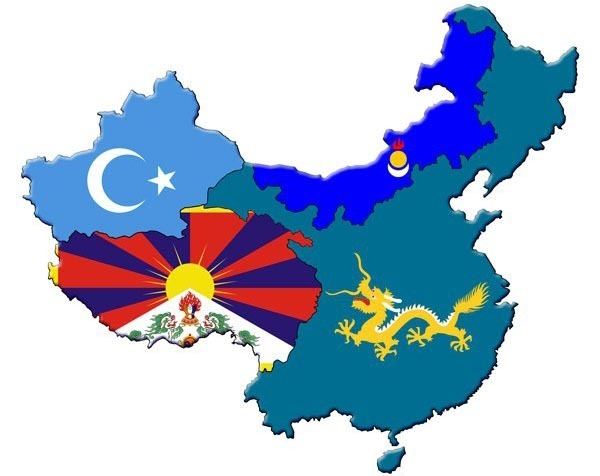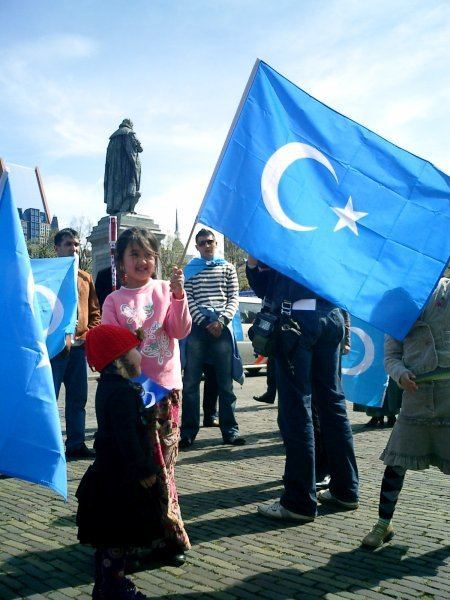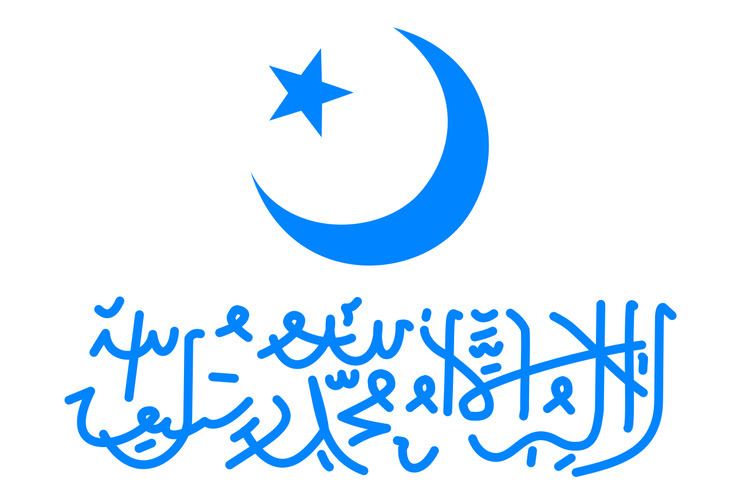Traditional Chinese 東突厥斯坦 Hanyu Pinyin Simplified Chinese 东土耳其斯坦 | Simplified Chinese 东突厥斯坦 Traditional Chinese 東土耳其斯坦 | |
 | ||
Wade–Giles Tung T'u-chüeh-szu-t'an | ||
East turkestan uyghurstan
East Turkestan (Uyghur: شەرقىي تۈركىستان, Шәрқий Түркистан, Shərqiy Türkistan) also known as Eastern Turkistan, Chinese Turkestan, Uyghurstan, Uyghuristan is a political term with multiple meanings depending on context and usage. Historically, the term was invented by Russian Turkologists like Nikita Bichurin in the 19th century to replace the term Chinese Turkestan, which referred to the Tarim Basin in the southwestern part of Xinjiang province of the Qing dynasty. The medieval Persian toponym "Turkestan" and its derivatives were not used by the local population of the greater region, and China had its own name for an overlapping area since the Han Dynasty as Xiyu, with the parts controlled by China termed Xinjiang from the 18th century onward. The historical Uyghur name for the Tarim Basin is Altishahr, which means "six cities" in Uyghur.
Contents
- East turkestan uyghurstan
- History of east turkestan
- Current usage
- Early terminology
- Early 20th century
- Late 20th century
- References

Starting in the 20th century, Uyghur separatists and their supporters used East Turkestan (or "Uyghurstan") as an appellation for the whole of Xinjiang, or for a future independent state in present-day Xinjiang Uyghur Autonomous Region (presumably with Ürümqi as its capital). They reject the name of Xinjiang because of an allegedly Chinese perspective reflected in the name and prefer East Turkestan to emphasize connection to other westerly Turkic groups. However, even in nationalist writing, East Turkestan retained its older, more narrow geographical meaning. In China, the term has negative connotations because of its origins in European colonialism and present use by militant groups. The government of China actively discourages its use.

Before conquest by the Dzungar Khanate in the Dzungar conquest of Altishahr, Eastern Turkestan was called Moghulistan ("land of Mongols"), and was ruled by descendants of Genghis Khan in the Yarkent Khanate (Chagatai Khanate). Uyghurs in Turfan request that the Qing dynasty free them from Dzungar rule. The Qing dynasty allied with Muslim ruler Emin Khoja, destroyed the Dzungar Khanate, which held dominion over Eastern Turkestan.

History of east turkestan
Current usage

The term "East Turkestan" is inextricably linked with politics. In general, most of the toponyms for places in Central Asia—although its boundaries and Xinjiang's inclusion in it are disputed—do not reflect the region's diversity. As the history of Xinjiang in particular is contested between the government of China and Uyghur separatists, the official and common name of Xinjiang [Uyghur Autonomous Region] (with its Uyghur loanword counterpart, Shinjang) is rejected by those seeking independence. "East Turkestan", a term of Russian origin, asserts a continuity with a "West Turkestan", or the now-independent states of Soviet Central Asia. Not all of those states accept the designation of "Turkestan", however; Tajikistan's Persian-speaking population feels more closely aligned with Iran and Afghanistan. For separatists, East Turkestan is coterminous with Xinjiang, or the independent state that they would like to lead in Xinjiang. Proponents of the term "East Turkestan" argue that the name Xinjiang is arrogant, because if the individual Chinese characters are to be taken literally and not as a proper name, then Xinjiang means "New Territory". The official translation for "Xinjiang" is "old territory returned to the motherland". Some Chinese scholars have advocated a name change for the region, or a reversion to the older term Xiyu ("Western Regions"), arguing that "Xinjiang" might mislead people into thinking that Xinjiang is "new" to China. Other scholars defend the name, noting that Xinjiang was new to the late Qing dynasty, which gave Xinjiang its current name.
In modern separatist usage, "Uyghuristan" (Уйғуристан), which means "land of the Uyghurs", is a synonym for Xinjiang or a potential state in Xinjiang, like "East Turkestan". There is no consensus among separatists about whether to use "East Turkestan" or "Uyghurstan"; "East Turkestan" has the advantage of also being the name of two historic political entities in the region, while Uyghurstan appeals to modern ideas of ethnic self-determination. Uyghurstan is also a difference in emphasis in that it excludes more peoples in Xinjiang than just the Han, but the "East Turkestan" movement is still a Uyghur phenomenon. Kazakhs and Hui Muslims are largely alienated from the movement, as are Uyghurs who live closer to the eastern provinces of China. Separatist sentiment is strongest among the Uyghur diaspora, who practice what has been called "cyber-separatism", encouraging the use of "East Turkestan" on their websites and literature. Historically "Uyghurstan" referred to the northeastern oasis region of "Kumul-Turfan". "Chinese Turkestan", while synonymous with East Turkestan in historical terms, is not used today, rejected by Uyghur separatists for the "Chinese" part of the name and by China for the "Turkestan" part. In China, the terms "East Turkestan", "Uyghurstan", and even "Turkestan" alone connotes old Western imperialism and the past East Turkestan republics, and modern militant groups, such as the East Turkestan Islamic Movement (ETIM). The government of China conflates the violence of differing separatist groups, such as the ETIM and the East Turkestan Liberation Organization, as coming simply from "East Turkestan forces". Chinese diplomatic missions have objected to foreigners' use of "East Turkestan". They argue that the term is political and no longer geographical or historical, and that its use represents "a provocation" to the sovereignty of China. The historical definitions for "East Turkestan" are multivarious and ambiguous, reflecting that outside of Chinese administration, the area now called "Xinjiang" was not geographically or demographically a single region.
Early terminology
In China, the term Western Regions (Chinese: 西域; pinyin: Xīyù; Wade–Giles: Hsi1-yü4; Uyghur: Qurighar) referred to the regions west of the Yumen Pass, and more specifically the Tarim Basin in Xinjiang that had come under the Han dynasty's control since 60 BC. Since the Han, successive Chinese governments had to deal with secessionist movements and local rebellions from different peoples in the region. However, even when Xinjiang was not under Chinese political control, Xinjiang has long had "close contacts with China" that distinguish it from the independent Turkic countries of Central Asia. The Gökturks, known in ancient Chinese with pronunciation as Tutkyud as well as modern Chinese pronunciation as Tujue (Tu-chueh; Chinese: 突厥; pinyin: Tūjué; Wade–Giles: T'u1-chüeh2) united the Turkic peoples and created a large empire, which broke into various Khanates; the West Tujue Khanate inherited Xinjiang, but West Tujue became part of China's Tang dynasty until the 9th century. However, the terms for West Tujue and East Tujue do not have any relation with the terms West and East Turkestan. "Turkestan", which means "region of the Turks", was defined by Arab geographers in the ninth and tenth centuries as the areas northeast of the Sir River. For those Arab writers, the Turks were Turkic-speaking nomads, and not the sedentary Persian-speaking oasis dwellers. With the various migrations and political upheavals following the collapse of the Gökturk confederation and the Mongol invasions "Turkestan" gradually ceased to be a useful geographic descriptor, and was not used.
During the sixteenth century, the Chagatai Khanate completed the Islamification and Turkification of western Xinjiang and the surrounding region, known then as Moghulistan, while China's Ming dynasty held the Eastern Areas. After the Fall of the Ming dynasty, a western Mongol group established a polity in "Chinese Tartary" as it was sometimes known, or in eastern Xinjiang, expanding southward into southern Xinjiang. In 1755, the Qing dynasty defeated the Mongol Dzungar Khanate and captured two territories in Xinjiang. The northern territory, where the Dzungars lived, was called Dzungaria, while the southern areas which the Dzungars controlled and mined were called Huijiang (Hui-chiang; Chinese: 回疆; pinyin: Huíjiāng; Wade–Giles: Hui2-chiang1; literally: "Muslim territory") or Altishahr. The term "Xinjiang", which up until that time simply meant all territories new to the Qing, gradually shifted in meaning for the Qing court to exclusively mean Dzungaria and Altishahr taken together. In 1764, the Qianlong Emperor made this use of Xinjiang as a proper name official, and issued an imperial order defining Xinjiang as a "provincial administrative area". After General Tso suppressed the Dungan revolt in 1882, Xinjiang was officially reorganized into a province and the name Xinjiang was popularized, superseding "Xiyu" in writing.
At the same time as the Chinese consolidation of control in Xinjiang, explorers from the British and Russian empires explored, mapped, and delineated Central Asia in a competition of colonial expansion. Several influential Russians would propose new terms for the territories, as in 1805 when the Russian explorer Timovski revived the use of "Turkestan" to refer to Middle Asia, and "East Turkestan" to refer to the Tarim Basin east of Middle Asia in southern Xinjiang; or in 1829, when the Russian sinologist Nikita Bichurin proposed the use of "East Turkestan" to replace "Chinese Turkestan" for the Chinese territory east of Bukhara. The Russian Empire mused expansion into Xinjiang, which it informally called "Little Bukhara". Between 1851 and 1881, Russia occupied the Ili valley in Xinjiang, and continued to negotiate with the Qing for trading and settlement rights for Russians. Regardless of the new Russian appellations, the original inhabitants of Central Asia generally continued not to use the word "Turkestan" to refer to their own territories.
After a spate of annexations in Middle Asia, Russia consolidated its holdings west of the Pamir Mountains as the Turkestan Governorate or "Russian Turkestan" in 1867. It is at this time that Western writers began to divide Turkestan into a Russian and a Chinese part. Although foreigners acknowledged that Xinjiang was a Chinese polity, and that there were Chinese names for the region, some travelers preferred to use "names that emphasized Turkic, Islamic, or Central Asian, i.e., non-Chinese characteristics". For contemporary British travelers and English-language material, there was no consensus on a designation for Xinjiang, with "Chinese Turkestan", "East Turkestan", "Chinese Central Asia", "Serindia" and "Sinkiang" being used interchangeably to describe the region of Xinjiang. Until the 20th century, locals used the names of cities or oases in their "territorial self-perception", that expanded or contracted as needed, such as Kashgaria out of Kashgar to refer to southwestern Xinjiang. "Altishahr", or "six cities", collectively referred to six vaguely defined cities south of the Tian Shan.
Early 20th century
In 1912, a Republican Revolution overthrew the Qing Dynasty and created a Republic of China. As Yuan Dahua, the last Qing governor, fled from Xinjiang, one of his subordinates, Yang Zengxin (杨增新), took control of the province and acceded in name to the Republic of China in March of the same year. In 1921, the Soviet Union officially defined the Uyghurs as the sedentary Turkic peoples from Chinese Turkestan as part of their nation building policy in Central Asia. Multiple insurgencies arose against Yang's successor Jin Shuren (金树仁) in the early 1930s throughout Xinjiang, usually led by Chinese Muslims. "East Turkestan" became a rallying cry for people who spoke Turki and believed in Islam to rebel against Chinese authorities. In the Kashgar region on November 12, 1933, Uyghur separatists declared the short-lived and self-proclaimed East Turkestan Republic (ETR), using the term "East Turkestan" to emphasize the state's break from China and new anti-China orientation.
The First ETR gave political meaning to the erstwhile geographical term of East Turkestan. However, the Chinese warlord Sheng Shicai (盛世才) quickly defeated the ETR and ruled Xinjiang for the decade after 1934 with close support from the Soviet Union. Eventually, though, the Soviet Union exploited the change in power from Sheng to Kuomintang officials to create the puppet Second East Turkestan Republic (1944–1949) in present-day Ili Kazakh Autonomous Prefecture to exploit its minerals, later justifying it as a national liberation movement against the "reactionary" Kuomintang regime. Amid the anti-Han programs and policies and exclusion of "pagans", or non-Muslims, from the separatist government, Kuomintang leaders based in Dihua (Ürümqi) appealed to the long Chinese history in the region to justify its sovereignty over Xinjiang. In response, Soviet historians produced revisionist histories to help the ETR justify its own claims to sovereignty, with statements such as that the Uyghurs were the "most ancient Turkic people" that had contributed to world civilization. Traditionally, scholars had thought of Xinjiang as a "cultural backwater" compared to the other Central Asian states during the Islamic Golden Age. Local British and American consuls, also intrigued by the separatist government, published their own histories of the region. The Soviet Uyghur histories produced during its support of the ETR remain the basis of Uyghur nationalist publications today.
Late 20th century
“We have to conquer our own country and purify it of all infidels. Then, we should conquer the infidels’ countries and spread Islam. The infidels who are usurping our countries have announced war against Islam and Muslims, forcing Muslims to abandon Islam and change their beliefs.” - Abdullah Mansour, leader of the Uyghur separatist movement Turkistan Islamic Party (East Turkestan Islamic Movement), from “The Duty of Faith and Support,” Voice of Islam/al-Fajr Media Center, August 26, 2009.
At the end of the Chinese Civil War in 1949, with Xinjiang divided between Kuomintang forces and ETR secessionists, the Communist leadership persuaded both governments to surrender and accept the succession of the People's Republic of China government, and negotiated the establishment of Communist provincial governments in Yining (Ghulja) and Dihua. On October 1, 1955, PRC leader Mao Zedong designated Xinjiang a "Uyghur Autonomous Region", creating a regionwide Uyghur identity which overtook Uyghurs' traditionally local and oasis-based identities. Although the Soviet Union initially suppressed the publications of its past Uyghur studies programs, after the Sino-Soviet split in the 1960s, it revived its Uyghur studies program as part of an "ideological war" against China. The term "East Turkestan" was popularized in academic works, but inconsistently: at times, the term East Turkestan only referred to area in Xinjiang south of the Tian Shan mountains, corresponding to the Tarim Basin; the areas north of the Tian Shan mountains were called Dzungaria or Zungaria. Tursun Rakhimov, a Uyghur historian for the Communist Party of the Soviet Union during the Sino-Soviet split, argued in his 1981 book "Fate of the Non-Han Peoples of the PRC" that "both" East Turkestan and Dzungaria were conquered by China and "renamed" Xinjiang. Occasionally, he used East Turkestan and Xinjiang interchangeably. Concurrently during the Cultural Revolution and the Revolution's campaigns against "local nationalism", the government had come to associate the term East Turkestan with Uyghur separatism and "foreign hostile forces" and forbade its usage. Uyghur nationalist historian Turghun Almas and his book Uyghurlar (The Uyghurs) and Uyghur nationalist accounts of history were galvanized by Soviet stances on history, "firmly grounded" in Soviet Turcological works, and both heavily influenced and partially created by Soviet historians and Soviet works on Turkic peoples. Soviet historiography spawned the rendering of Uyghur history found in Uyghurlar. Almas claimed that Central Asia was "the motherland of the Uyghurs" and also the "ancient golden cradle of world culture". The global trends set by the Dissolution of the Soviet Union in the 1990s, and the rise of global Islamism and pan-Turkism revived separatist sentiments in Xinjiang and led to a wave of political violence that killed 162 people between 1990 and 2001. In 2001, the government of China lifted its ban on state media's using the terms "Uyghurstan" or "East Turkestan", as part of a general opening up after the September 11 attacks to the world about political violence in Xinjiang and a plea for international help to suppress what they see as "East Turkestan terrorists".
